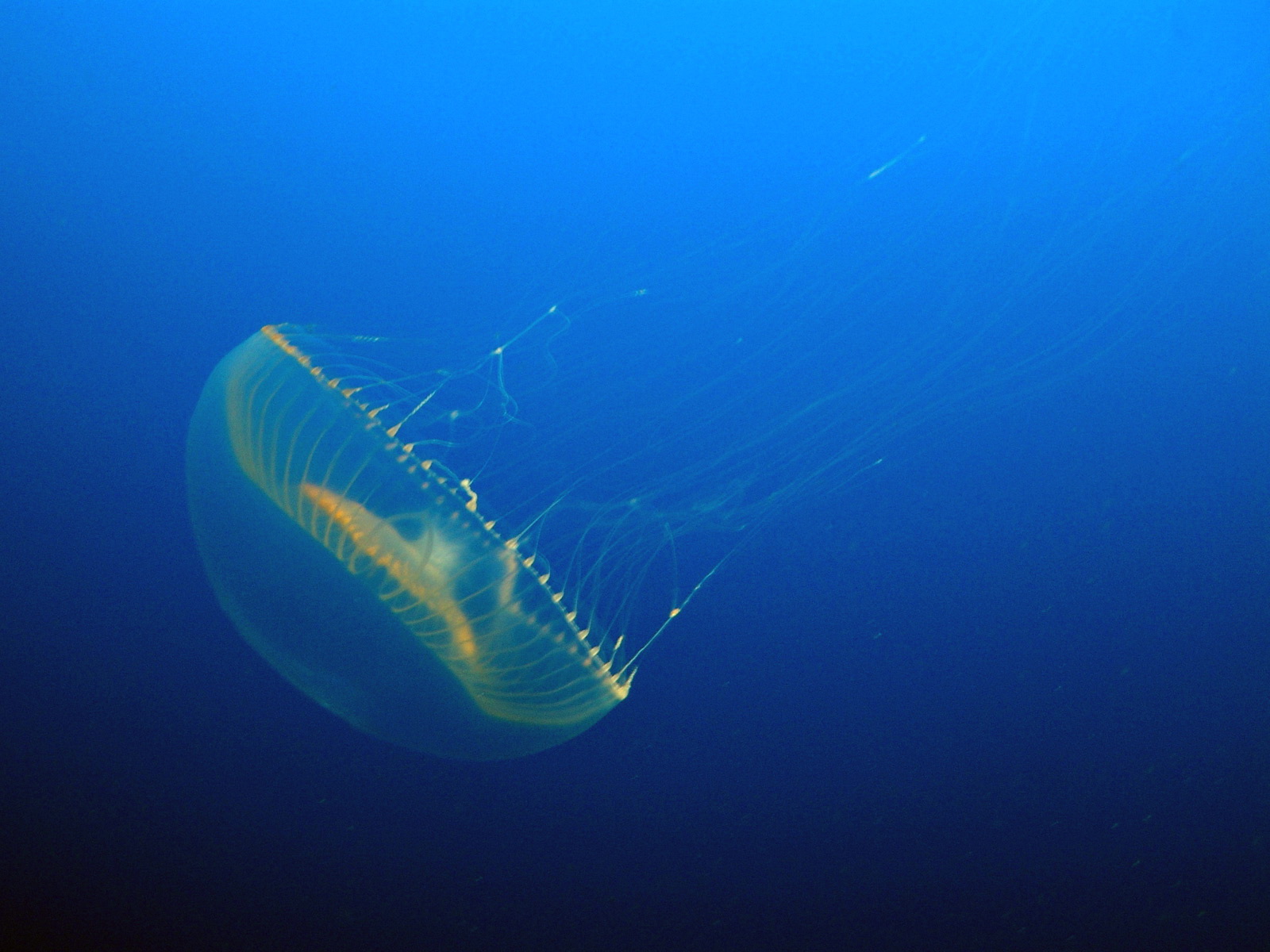Crystal Jellyfish (Aequorea victoria) - Wiki Aequorea victoria
From Wikipedia, the free encyclopedia
[Photo] Crystal jelly (Aequorea victoria) taken in the Monterey Bay Aquarium, CA, USA. Date 27.01.2006. Author Mnolf (http://commons.wikimedia.org/wiki/User:Mnolf)
Aequorea victoria, also called the crystal jelly, is a bioluminescent jellyfish that is found off the west coast of North America.
Crystal Jellys are almost impossible to see and only live about 6 months on average.
This jellyfish is capable of producing flashes of blue light by a quick release of Ca2+ which interacts with the photoprotein aequorin. The blue light produced is in turn transduced to green by the now famous green fluorescent protein (GFP). Both aequorin and GFP are important tools used in biological research. Aequorea victoria is a seasonal jellyfish. They completely disappear from the water in autumn. Only small polyp colonies remain on the sea floor. In spring, they reappear and start the cycle again.
Shimomura and Johnson, in 1961, isolated the protein aequorin, and its small molecule cofactor, coelenterazine, from large numbers of Aequorea jellyfish at Friday Harbor Laboratories. They serendipitously discovered, after initially finding bright luminescence on adding seawater to a purified sample, that calcium ions (Ca2+) were required to trigger bioluminescence. This research also marked the beginning of research into green fluorescent protein. See Shimomura (1985) Biol Bull 189: 1-5 for review (http://www.biolbull.org/cgi/reprint/189/1/1?view=long&pmid=7654844).
Ridgeway and Ashley (1967) microinjection aequorin into single muscle fibers of barnacles, and observed transient calcium ion dependent signals during muscle contraction.
http://en.wikipedia.org/wiki/Aequorea_victoria
| The text in this page is based on the copyrighted Wikipedia article shown in above URL. It is used under the GNU Free Documentation License. You may redistribute it, verbatim or modified, providing that you comply with the terms of the GFDL. |
